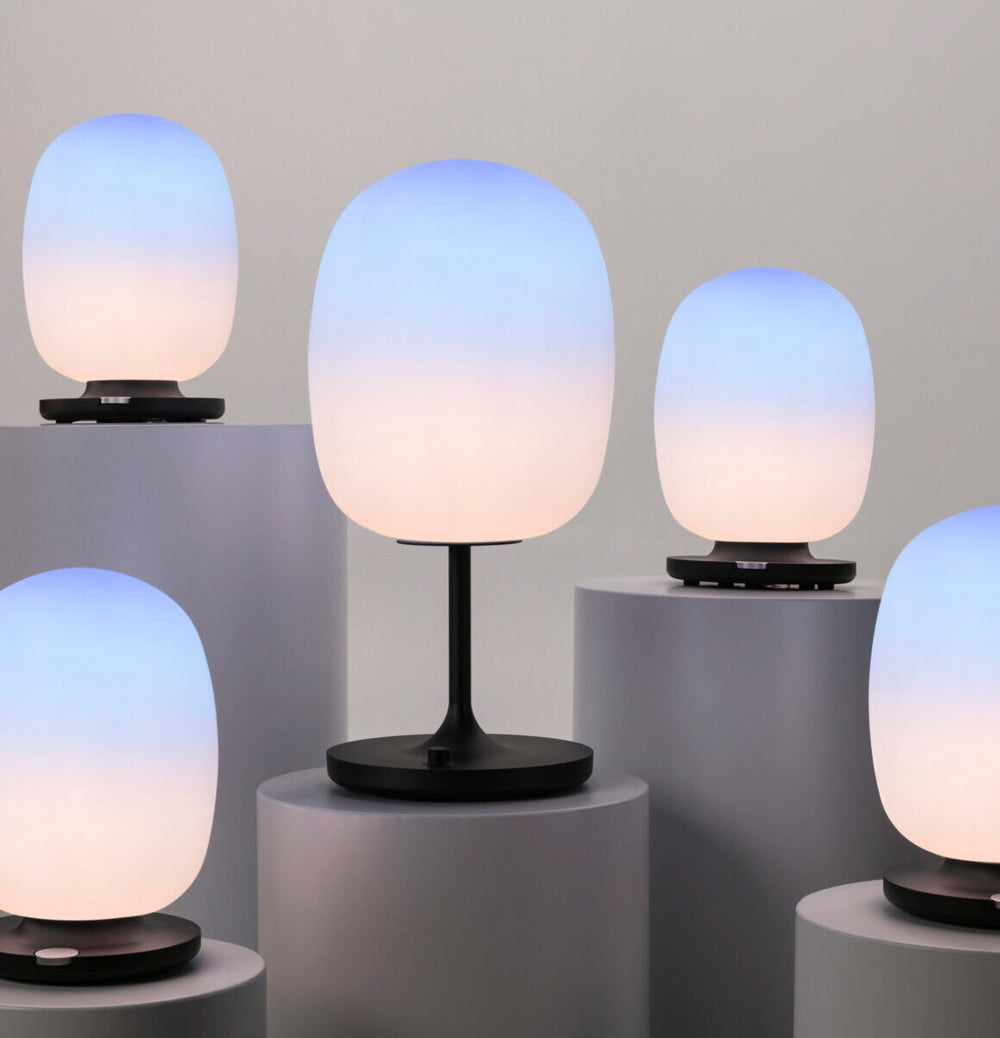How to Use a Happy Light and Do They Actually Work?

As the sun sets earlier and we head into the fall and winter months, many struggle with seasonal changes that can impact mood and energy levels. Also known as Seasonal Affective Disorder, SAD affects people in areas where the winter days are short and there’s not a lot of sunlight during the day. This is where the concept of a "happy light" or SAD lamp comes into play, offering a potential solution to combat these challenges. Even though they’ve gained popularity, we do have to question if they’re really working or are they just a band-aid for more serious health issues?
Understanding Happy Lights and SAD Lamps: What is Light Therapy?
Light therapy lamps are basic lighting devices designed to mimic natural sunlight. Studies have shown that the right amount of light at the right time is the key to help alleviate mood disorders and regulate circadian rhythms. Light therapy involves exposing yourself to bright, artificial light, which helps to simulate the effects of sunlight and trigger positive physiological responses.
How to Use Your Happy Light Effectively
- Selecting the Right Light Intensity: When picking out a happy light, the standard is a brightness level of around 10,000 lux. This intensity closely resembles natural sunlight and is believed to be most effective in influencing mood and energy. But make sure you’re using it for only 30 minutes at the most in the morning.
- Timing is Essential: You should be using your happy light every day for optimal results, especially during the daytime. Exposure to bright light early in the day helps reset your internal body clock, promoting alertness and improving sleep patterns.
- Maintain the Right Distance: Position your happy light within 1-2 feet from your face. This proximity ensures that you receive the appropriate light intensity without causing discomfort or straining your eyes.
- Incorporate Your Happy Lamp in Daily Activities: Get the most out of your happy light by engaging in activities like reading, working, or having breakfast. This not only maximizes the benefits but also helps integrate it into your daily routine seamlessly.
"The more light you get, the less you'll feel depressed"
The Problem with Happy Lights
Research into the effectiveness of happy lights has yielded promising results, but they shouldn’t be a solution for overall wellness. Studies have shown that light therapy can be effective in treating Seasonal Affective Disorder. Light therapy has been linked to improved mood, increased alertness, and enhanced cognitive performance.
Most happy lights are not practical or designed for sustained use. At 10,000 lux, happy lights have a super intense bright light that can be quite harsh to look at that's why it’s usually recommended for 30 minutes of use during the morning.
We’ve talked to psychologists and sleep experts, and many of their patients say that using happy light or light box is too bright, uncomfortable, inconvenient or sometimes even too embarrassing to use. Think of hospital lights, they’re bright and uncomfortable to look at for long periods of time. SAD lamps are more of a “treatment” burst of light with temporary effects. Not only that, but you have to actively make sure you’re remembering to use it.
When you’re affected by SAD, it’s not just your mental well-being that suffers, insufficient lighting affects your entire health. Without proper lighting, our circadian rhythm gets thrown off which leads to many other health issues. You can’t sleep well throughout the night, you overeat, you can’t focus during the day, just to name a few. That’s why it’s so important to understand the relationship between light and health.
Last Thoughts: Are Happy Lights Worth It?
Adding a happy light into your daily routine can have a positive impact on your mood and health, but not all lights are equal. Even though light therapy is an option to help with Seasonal Affective Disorder and enhancing your mood, it’s not the end all solution for better health. It’s like putting a band aid on the problem instead of addressing the entire issue.
SKYVIEW is a 24/7 wellness solution and an investment you can be confident in making when it comes to the right lighting for daily performance because it was designed for all day use and biology. SKYVIEW replicates the information we get from natural light throughout the day—both visual and non-visual. It focuses on the “sky blue” wavelength that sends signals to the brain through melanopsin in our eyes, so you’re getting lasting biological benefits.
Melanopsin is responsible for many things in our body, mainly regulating our circadian rhythm, so all our peripheral clocks are working properly. For example, our cardio clock needs melanopsin to tell our brain when it should start because it controls our heart rate and blood pressure. SKYVIEW also uses a gradient color dispersion which combines that sky blue wavelength with warm colors to avoid uncomfortable harsh lighting.
The key to success lies in consistency and finding the right balance. While happy lights are a valuable tool, they are not a replacement for professional medical advice or treatment. If you're considering using a happy light, consult with a healthcare provider to ensure it's a suitable choice for your specific needs.
Shop SKYVIEW Products
Shop Now



